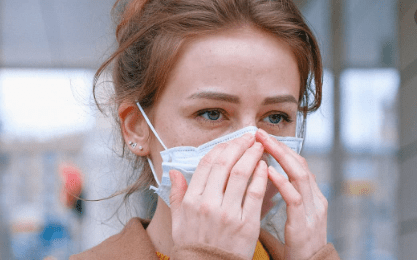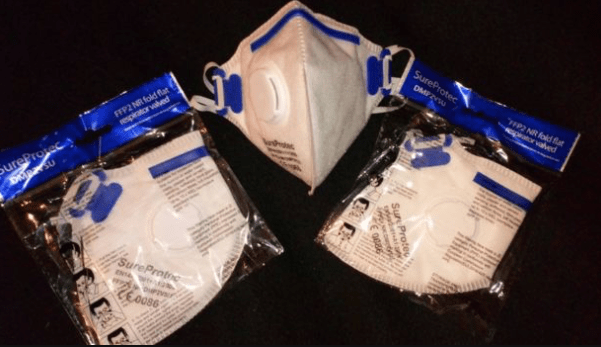Face masks have become part of the ‘new’ everyday uniform around the world following the recommendation from health authorities that people wear them in public. But merely wearing one doesn’t necessarily mean you’re protected ― or protecting anyone else.
Simple Mistakes People Make When Using Face Masks:
The purpose of wearing face masks is to help prevent you from accidentally spreading or catching an infectious disease that, like COVID-19, it is spread through respiratory droplets primarily.
It is estimated that 25% of people infected with the novel coronavirus may not be experiencing any symptoms. And it is for this reason people are now encouraged to wear masks to protect others when they are out in the community.
Knowing that some asymptomatic people could spread the virus before they have symptoms. We now need to live our lives with the view that anyone you meet could potentially infect you. That is the awful reality of this pandemic.
To stop the spread of COVID-19, and avoid infecting yourself, you need to follow essential guidelines when putting on your mask and avoid making these consequential yet straightforward mistakes.
Click – FFP2 Face Masks – Available In Stock
Mask Not Fitting Correctly – Hangs Loosely:
When worn correctly, N95 respirators, the type that doctors use, they are fitted closely to the face. Whether you are using a surgical mask or a homemade mask, you may have the sides away from the cheeks, which are open and fitting too loosely. You do not want the mask to ‘bulge’ out in this way.
The objective is to create a barrier, to keep out as much air/virus as possible. You are not going to achieve a flawless seal when wearing a surgical mask or with a homemade mask. You aim to make it fit as tight as possible and secure enough to not slide down the face.
It also needs to be comfortable on your face. You may have to wear it for many hours, depending on your workplace.
Surgical masks tend to have a bit of gap on the sides, and around the nose, people need to do their best to tighten and close these spaces with the straps or metal strips across the nose where fitted.
A problem for men is if they have facial hair/beards. It can be a hinder to masks from fitting close to the skin. A recommendation for people with beards is to trim them close to their faces or consider shaving them off while the pandemic is spreading. The ‘fuller’ and ‘fluffier’ the beard is, the mask will lose its optimal functionality.
If you cover just the tip of your nose, it’s going to leave air gaps on the top of your mask where contaminated air can go in and out. That’s why its recommended that the mask sits high up on your nose and not the tip.
Your Face Mask Covers Your Mouth Only:
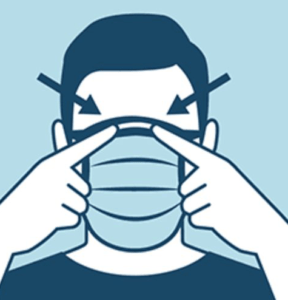
If you are wearing your mask too low, so it only covers your mouth, I’m afraid that’s incorrect. You risk becoming infected yourself or making someone else unwell. Some people breathe partially or entirely through the nose; this is one way you can become infected by breathing in viral particles.
Similarly, if you are infected and sneeze with the mask covering the mouth only, you generate respiratory droplets that spread and can contaminate people who are nearby.
If the mask does not cover your nose, you also risk contamination from the mask itself, which is, in effect, collecting germs and droplets on its exterior throughout the day. Cross-contamination could occur from the mask through the nose and into the body as it rubs against the nostrils.
The Mask Comes In Contact With Your Body Or Other Items:
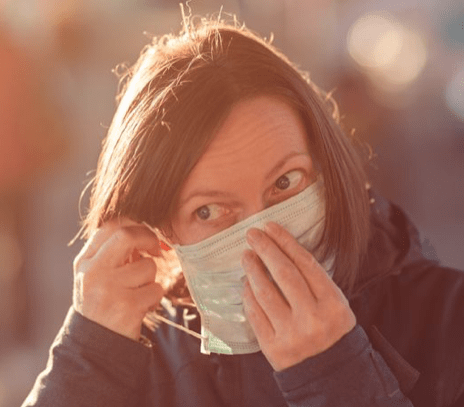
Imagine if the coronavirus is on your hair, forehead, chin, neck, hands, body, or clothes. You then touch these areas with the inside of the mask before fitting it, this now creates a real danger of self-contamination.
If any of these areas are contaminated and then place the mask against the nose and mouth area, the nose has vulnerable mucous membranes – infection can occur. Self-awareness is essential at all times.
Another mistake is to leave it resting on your neck when not on your face.
The mask shouldn’t be around your neck if you’ve already been wearing it. If there was any contamination attached to the mask, you don’t want it coming into contact with the neck area. You may then touch that area with your hand and put it near your eyes, nose, or mouth and risk infecting yourself.
The whole purpose of wearing the face mask is to protect your nose and mouth and to protect others from any coughs or sneezes from droplets.
When you put on and take off a mask, you also need to be careful not to touch the front of the mask. Please do not touch the mask itself, remove the mask by holding the ear loops, ties or elastic that is attached too it.
When you remove the mask, you should place it in a secure bag (mark name on bag) or separate containment area. By doing this, you prevent contamination too or from other sites, and do NOT leave the mask hanging around your neck.
Always Remember to wash your hands or use a hand sanitiser before you put a face mask on, and after you take it off.
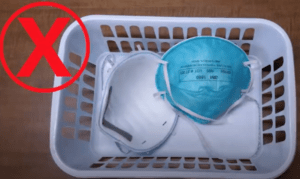
Read – Wearing Surgical Masks Can Lover Covid-19 Spread
Clean Your Mask Properly If You Need To Re-use It:
If you are planning to reuse your mask (as many will need to as they are not easy to purchase), you need to make sure it does not become another contamination zone.
To be extra safe, I would recommend you wash them every day. Homemade fabric masks can go in the washing machine to ensure they are safe to wear in your daily activities.
Medical experts have said that N95/FFP3 masks can be steam cleaned. You can do this by placing the mask over a pot of boiling water for about 10 minutes, do not let the mask become saturated. It needs to be ‘air-dried’ thoroughly afterward. Once a mask is visibly damaged or badly soiled, safely dispose of it.

Click – FFP2 Face Masks – Available In Stock
A research team in China published a study in the ‘Journal of Medical Virology’ on using steam effectively to sanitize surgical masks and N95 respirators.
The sanitization process, which used avian coronavirus of infectious bronchitis virus to mimic the new coronavirus, was simple. Contaminated masks were placed in plastic bags and steamed over boiling tap water in a kitchen pot.
“The avian coronavirus was completely inactivated after being steamed for 5 minutes,” wrote the Chinese researchers, who conducted the study at the College of Veterinary Medicine, Qingdao Agricultural University, Qingdao, China.
The effectiveness of the masks was unaffected by exposure to steam as long as two hours, the Chinese researchers wrote. “In this study, mask decontamination with steam on boiling water is without abrasive physical or chemical action. This can account for its excellent performance in maintaining the masks’ blocking efficacy.”
In addition to not damaging the masks, the steam treatment has other benefits, they wrote. “This measure has other advantages including safety, not requiring special agents or devices, and rapid inactivation of most microbes potentially attached to the surface of masks.”
Have you had problems with buying face masks? Have you had to resort to making your face mask, do you feel as safe going out using a homemade face mask? Please leave any comments or questions below, and I will be happy to discuss them with you.

